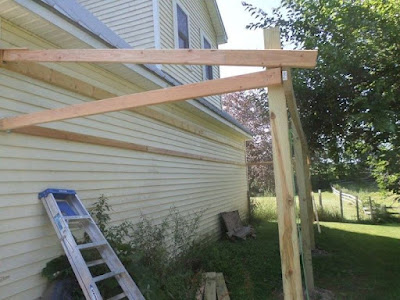Building a DIY lean-to off your garage can provide valuable extra space for storage, work, and leisure activities. However, building on a sloped surface can present unique challenges. Here are some tips on how to build a DIY lean-to off garage on a slope:
1. Plan and Design
The first step is to plan and design your lean-to. You will need to consider the slope of the ground, the size and shape of the lean-to, and the materials you will need. It is essential to take accurate measurements and create a detailed plan before you start construction.
2. Prepare the Site
Preparing the site is critical to the success of your project. You will need to level the ground and make sure it is stable enough to support the structure. If the slope is steep, you may need to dig footings and install retaining walls to provide a stable foundation.
3. Build the Frame
The next step is to build the frame for your lean-to. You can use pressure-treated lumber or metal beams, depending on your preference and budget. It is essential to ensure that the frame is level and square, as this will impact the stability of the entire structure.
4. Install Roofing and Siding
Once the frame is in place, you can install the roofing and siding. You can use asphalt shingles, metal panels, or other materials depending on your preference and the local climate. It is essential to ensure that the roofing and siding are properly secured and weather-resistant.
5. Add Finishing Touches
After the main construction is complete, you can add finishing touches such as gutters, insulation, and electrical wiring. You can also add windows, doors, and other features to make your lean-to more functional and attractive.
Conclusion
Building a DIY lean-to off your garage on a slope can be a challenging but rewarding project. With careful planning and preparation, you can create a functional and attractive space that enhances the value of your home. Be sure to consult local building codes and regulations before starting construction, and always prioritize safety and stability in your design and construction.

0 comments:
Post a Comment
Note: Only a member of this blog may post a comment.